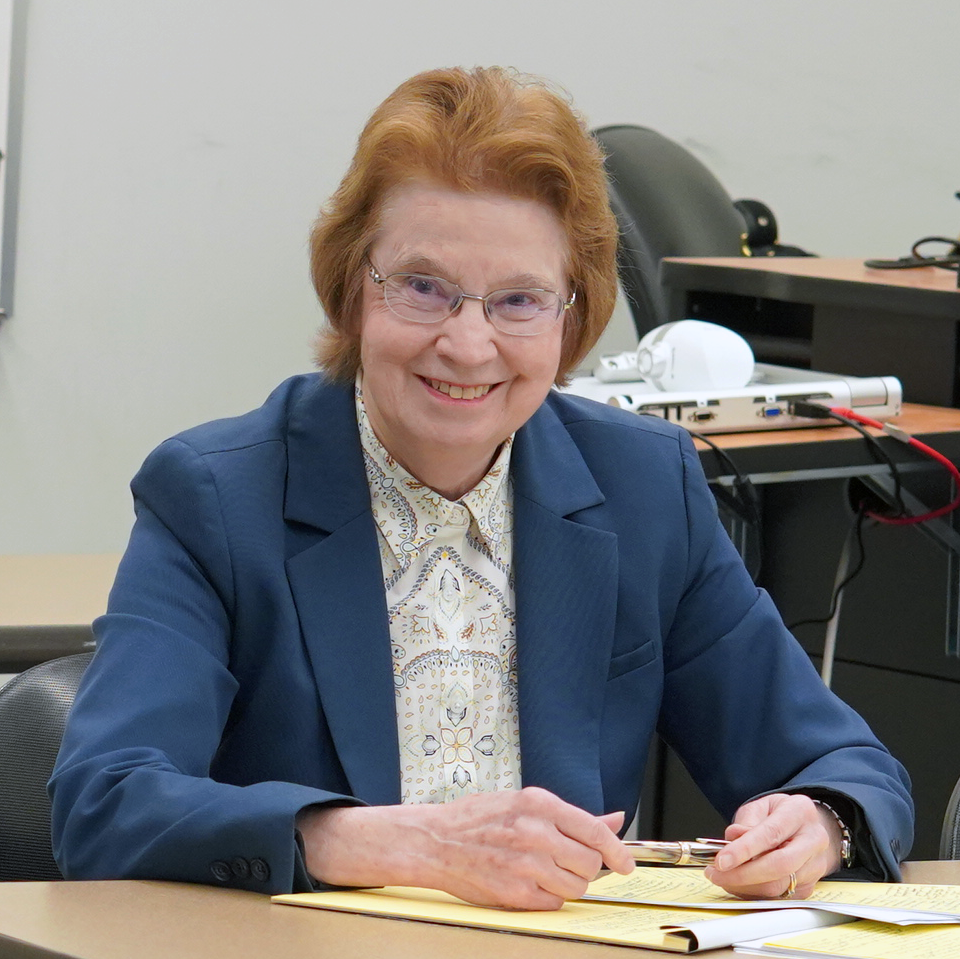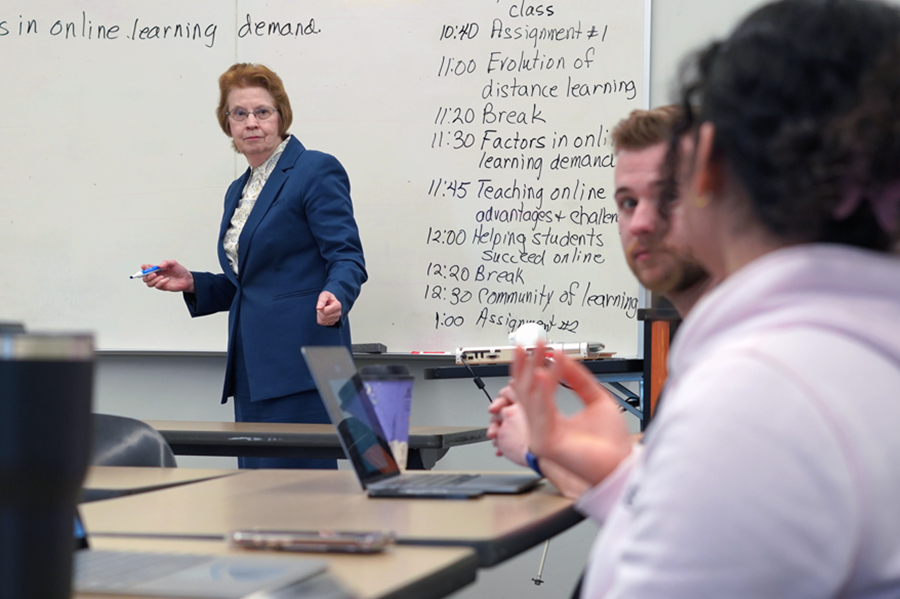Audeen Fentiman Reflects on a 50-Year Journey in Engineering and Education
 Audeen Fentiman, the Purdue School of Engineering Education's Crowley Family Professor Emerita, retired in August 2025 after more than five decades of work spanning education, industry, government, and academia. Throughout her career, she's woven together three passions—engineering education, nuclear engineering, and environmental engineering—creating programs and opportunities that have shaped how engineers learn and lead. From a rural West Virginia high school to leadership roles at major universities, her path shows how curiosity and a love of learning can take you farther than you ever planned. Here, Audeen shares her story in her own words.
Audeen Fentiman, the Purdue School of Engineering Education's Crowley Family Professor Emerita, retired in August 2025 after more than five decades of work spanning education, industry, government, and academia. Throughout her career, she's woven together three passions—engineering education, nuclear engineering, and environmental engineering—creating programs and opportunities that have shaped how engineers learn and lead. From a rural West Virginia high school to leadership roles at major universities, her path shows how curiosity and a love of learning can take you farther than you ever planned. Here, Audeen shares her story in her own words.Early Inspiration: Discovering a Love of Math and Teaching
I graduated from high school in a rural town in West Virginia in 1968. Career advice was simple back then—my parents insisted I take typing and shorthand “because you might have to support yourself one day.” But what really inspired me was mathematics. One incredible high school math teacher showed me how logical and beautiful math could be, and that love of numbers led me to earn bachelor’s and master’s degrees in mathematics.

As a graduate teaching assistant, I realized I loved teaching just as much as I loved learning. After earning my degree, I taught math at a rural high school. Watching students finally grasp a concept—and even start to enjoy math—was incredibly rewarding. Still, a classroom visit from an engineering professor got me thinking. He came to recruit my students, but I ended up recruiting myself into engineering.
A New Adventure: Entering Nuclear Engineering
That curiosity led me to Ohio State University, where I began my “adventure in nuclear engineering” in 1976. My research focused on long-term fuel supplies for nuclear power plants and how thorium—more abundant than uranium—could be used as fuel. I also helped establish the National Regulatory Research Institute, which still supports state energy and environmental regulators today.
Before finishing my Ph.D., I was recruited by Battelle Memorial Institute to work in its Nuclear Systems group, right across the street from campus. A Battelle fellowship helped me finish my dissertation, and I became the first woman to earn a Ph.D. in Nuclear Engineering from Ohio State. At the time, I was just trying to finish my degree—I didn’t realize I was making history.
I stayed at Battelle for nearly a decade, taking on technical and leadership roles focused on protecting nuclear materials and managing radioactive waste. Later, when my husband’s career took us to another city, I joined Mound Laboratories, a Department of Energy facility that produced materials for space missions and government research. There, I studied how to reduce radioactive and chemical waste—a project that deepened my growing interest in environmental issues.
Finding My Calling in Engineering Education
A few years later, Ohio State called again. The Department of Engineering Graphics was looking for someone with industry experience who could also teach and advise graduate students. It sounded like a perfect fit.
At Ohio State, I joined an NSF-funded initiative to modernize engineering education—making classes more hands-on, team-based, and relevant to students’ careers. I led the redesign of the first-year engineering experience, which became a model course now offered at both Ohio State and several high schools in the state. It was exciting to see students learning engineering the way engineers actually work.
Broadening My Impact: Environmental and Nuclear Leadership
As my interests expanded, I began teaching environmental engineering and risk assessment, eventually directing Ohio State’s interdisciplinary Environmental Science Graduate Program. In 2001, I became chair of the Nuclear Engineering Program—the first woman in the U.S. to lead such a program. It was a milestone I hadn’t set out to achieve, but one that made me proud and gave me a platform to support other women in STEM.
Coming to Purdue: Supporting Graduate Education
In 2006, I joined Purdue as a professor in Nuclear Engineering and soon after became Associate Dean of Engineering for Graduate Education and Interdisciplinary Programs—a role I held for nearly 12 years. That position let me focus on something I’ve always cared deeply about: helping students succeed.
We created a Graduate Student Advisory Committee to give students a stronger voice in decisions, started mentoring awards for faculty chosen by graduate students, and launched professional development programs, including workshops on career paths in academia, industry, and government. One of my favorite traditions was hosting a “thank you” breakfast each year to recognize graduate students for their hard work. We also facilitated design and approval of new degree programs, including the Master’s and Ph.D. in environmental engineering, the Master’s in interdisciplinary engineering, and the ENE graduate certificate.
Innovating in the School of Engineering Education
In 2015, I joined the School of Engineering Education as the Crowley Family Professor. While I continued as associate dean, I spent 2016-17 as interim head of ENE, and in 2018 I joined ENE full time. Around that time, we knew ENE needed to grow its online presence to meet the needs of working professionals and remote learners. I worked with a graduate student to bring one of my courses, Succeeding as an Engineering Professor, online. That became the first step toward fully online versions of ENE’s graduate certificate and master’s programs—and eventually, the hybrid Ph.D. program.
As more students joined ENE from different backgrounds and with different goals, I developed new courses to support them—like Exploring Alternative Career Paths as an Engineering Educator and a class for those teaching engineering online. Creating those courses reminded me of why I’ve always loved this field: engineers never stop learning or adapting.
In 2025, I was honored to be named a Fellow of the American Society for Engineering Education—a recognition that felt like a wonderful way to wrap up this chapter of my career.
Looking Ahead
So, what’s next? I’m not entirely sure—and that’s part of the fun. Initially, I plan to spend time with my family, friends, and garden, but I’m sure other interesting opportunities to contribute will come along.
